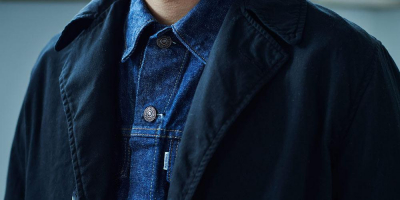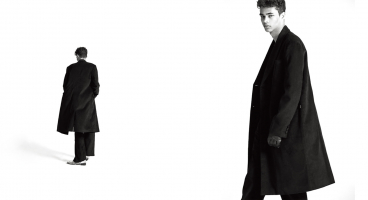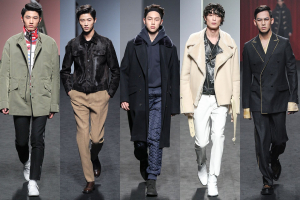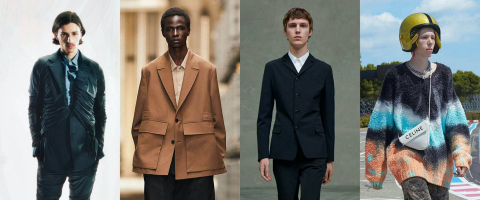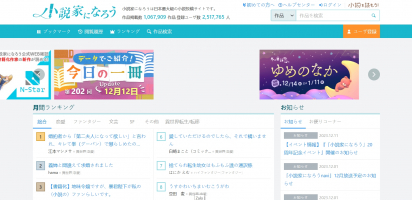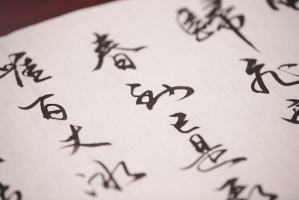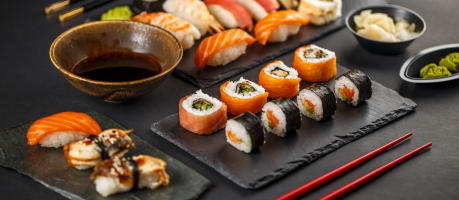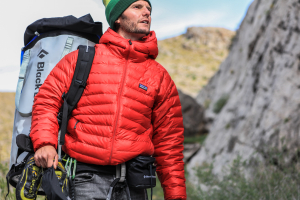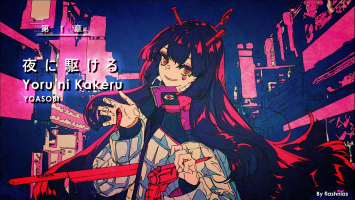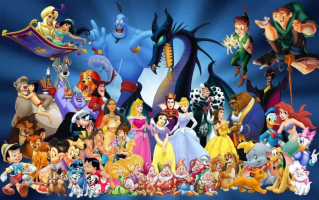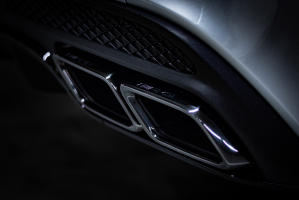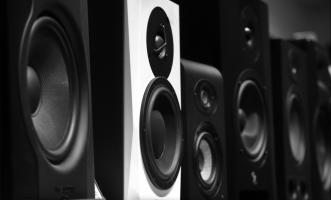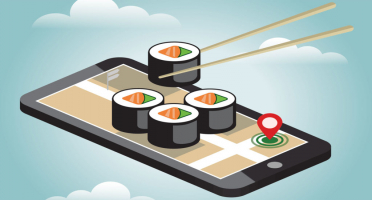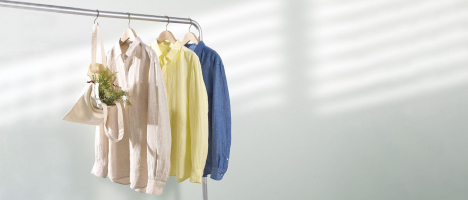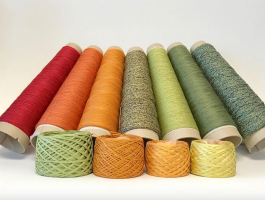Top 15 Best Japanese Menswear Brands
Anyone who has ever taken a stroll through downtown Tokyo is familiar with the strange energy that pervades Japanese culture: pragmatic yet dreamlike, ... read more...technical yet endlessly creative, refined yet outlandish. That craziness is also at the heart of the Japanese male fashion scene. Here is a list of the best Japanese menswear brands worth exploring, as well as the pieces and trends that have earned them acclaim.
-
A Bathing Ape (or BAPE) is a Japanese fashion label founded in Ura-Harajuku in 1993 by Nigo (Tomoaki Nagao). The brand specializes in lifestyle and street wear for men, women, and children and operates 19 stores in Japan, including Bape Stores, Bape Pirate Stores, Bape Kids Stores, Bapexclusive Aoyama, and Bapexclusive Kyoto. Bape Gallery, a space used for various events and art shows sponsored by Bape, is also located in the Kyoto store. Hong Kong, Taipei, Beijing, Shanghai, Guangzhou, Chengdu, Qingdao, Shenyang, Seoul, Jakarta, Dubai, New York City, Kuala Lumpur, London, Paris, Miami, and Los Angeles all have stores.
Previously, the company ran Busy Work Shop, Bape Cuts hair salon, Bape Café, BABY MILO, and The Cay Soldier. Nigo is also the creator of the secondary lines AAPE (by A Bathing Ape) and BAPY (Busy Working Lady). The company was sold to Hong Kong fashion conglomerate I.T. Group in 2011 for approximately $2.8 million. The brand draws heavily on computer games, toy figurines, and cartoons and has become deeply ingrained in hip-hop culture. Kanye West, A$AP Rocky, Pusha T, and The Weeknd are among his previous collaborators, and he co-owns sister brands Billionaire Boys Club and Ice Cream with Pharrell Williams. The brand's multi-colored camouflage prints, which adorn everything from sneakers to bow ties, are perhaps its most well-known feature.
Founded: 1993
Headquarters: Tokyo, Japan
Instagram: @bape_japan (2.6 million followers)
Website: https://row.bape.com/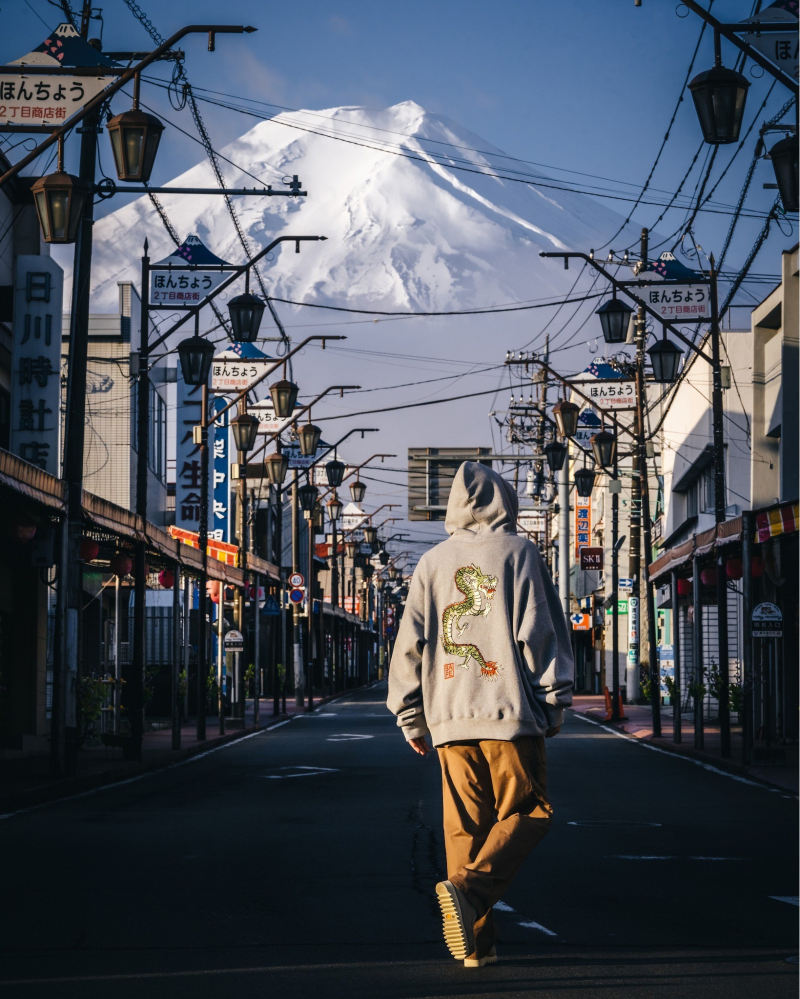
Image via https://www.instagram.com/bape_japan/ 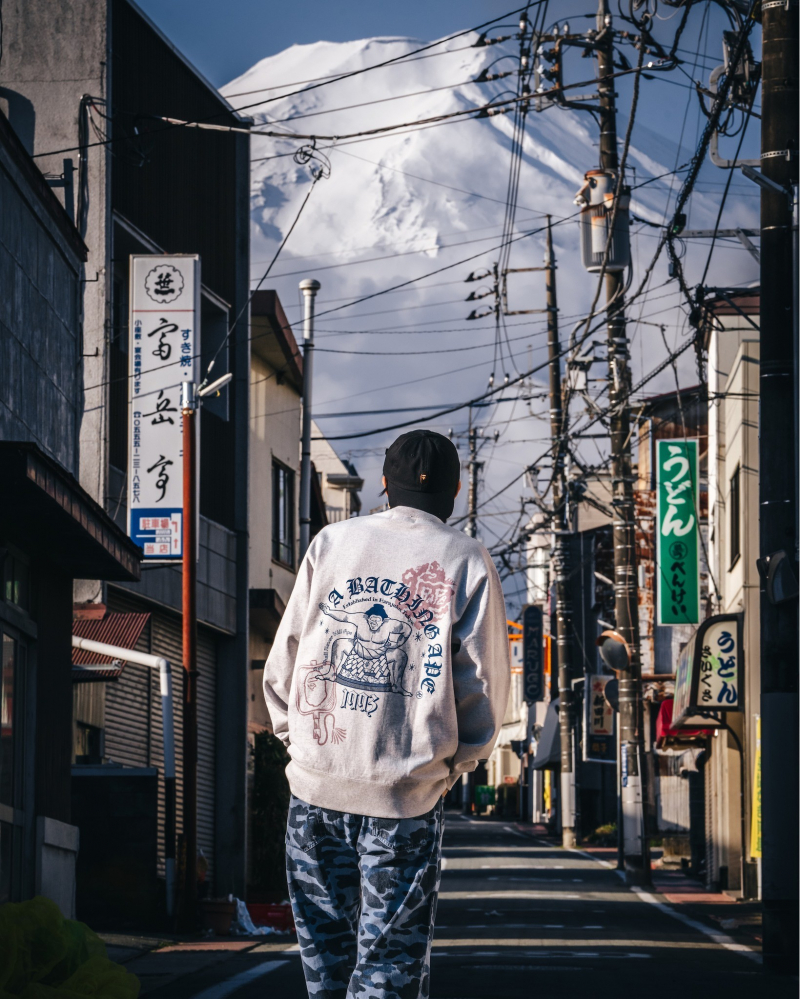
Image via https://www.instagram.com/bape_japan/ -
Comme des Garçons (also known as CDG) is a Japanese fashion label founded and led by Rei Kawakubo in Paris. The French flagship store is in Paris. This label owns a global store chain with locations in major cities such as London, Melbourne, Hong Kong, New York City, and Tokyo's Ginza district. Aside from fashion, the label has expanded into jewelry and perfume. During Paris Fashion Week and Paris Men's Fashion Week, the company showcases its main collections. According to reports from 2017, the company and its affiliates generated "over $280 million in revenue per year."
Rei Kawakubo founded the label in Tokyo in 1969, and it became a corporation in 1973. It is written as follows in Japanese: (Komu de Gyaruson). In French, the name means "like boys." The brand's name was inspired by the line "Comme les garçons et les filles de mon âge" from Françoise Hardy's 1962 song "Tous les garçons et les filles." In Japan, the brand became popular in the 1970s, and a menswear line was added in 1978. The company made its debut in Paris in 1981. French critics were critical of Kawakubo's heavy use of distressed black fabrics and unfinished seams.
Its clothes were frequently associated with a distressed and punk-oriented style throughout the 1980s. Kawakubo's 1982 collection "Destroy" received harsh criticism. The "Hiroshima bag lady look" was coined by Women's Wear Daily, and the Associated Press dubbed Kawakubo the "high priestess of the Japanese wrap." Unusual fashions persisted into the 1990s, many of which were despised by experts.
Founded: 1969
Headquarters: Tokyo, Japan (de facto); Paris, France (de jure)Instagram: @commedesgarcons (2.5 million followers)
Website: https://www.comme-des-garcons.com/
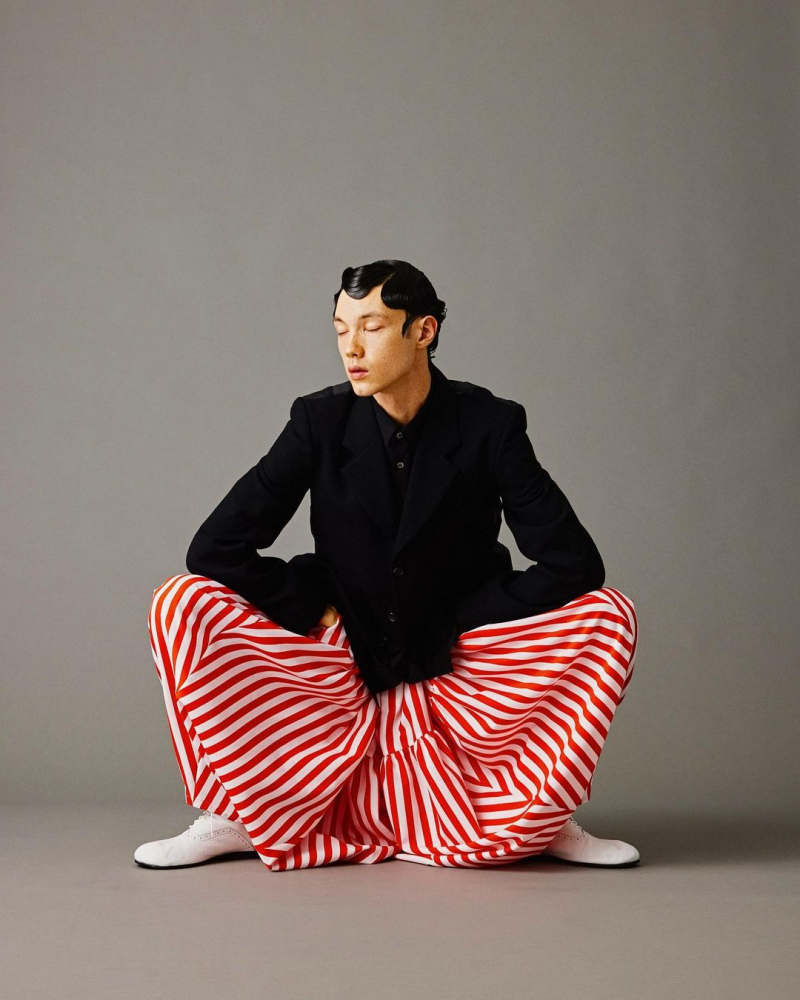
Image via https://www.instagram.com/commedesgarcons/ 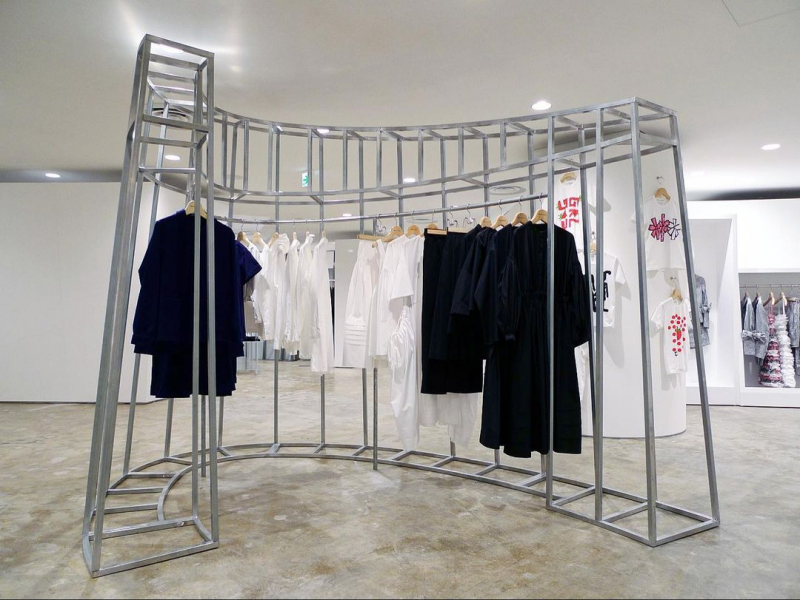
Image via https://www.instagram.com/commedesgarcons/ -
Y-3 is a 2003 collaboration between Tokyo-based Japanese designer Yohji Yamamoto and German sportswear brand adidas. Y-3 produces a range of street and sport-inspired clothing and footwear in a muted, often monochromatic palette, highlighting the textures of materials used and the experimental approach to their cut and line, combining Yamamoto's idiosyncratic approach to fabric, layering, and a poetic approach to clothing wearing with adidas' dynamism and technologically progressive approach to apparel. Adidas creative director Yohji Yamamoto launched Y-3 in October 2002. Yohji Yamamoto's distinct touch is combined with a trendy and fashionable modern sportswear style to create an innovative and popular sportswear style.
The name Y-3 is made up of the letters Y from Yohji Yamamoto's initials, 3 from Adidas' famous triple stripe logo signature, and - to represent the collaboration and link between the two brands. This futuristic label was created through a collaboration between a sportswear brand and a fashion brand. Y-3, a cult mashup of sportswear and luxury design, represents Adidas' fruitful collaboration with iconic designer Yohji Yamamoto. Collectors all over the world covet the brand because it is both stylish and functional, with a uniquely Japanese character and futuristic silhouettes. Look for its much-copied sports sneaker lines, which feature distinctive monochrome colorways and synthetic woven uppers.
Founded: 2002
Headquarters: Adi-Dassler-Strasse 1, Herzogenaurach.
Instagram: @adidasy3 (1.8 million followers)
Website: https://y-3.com/
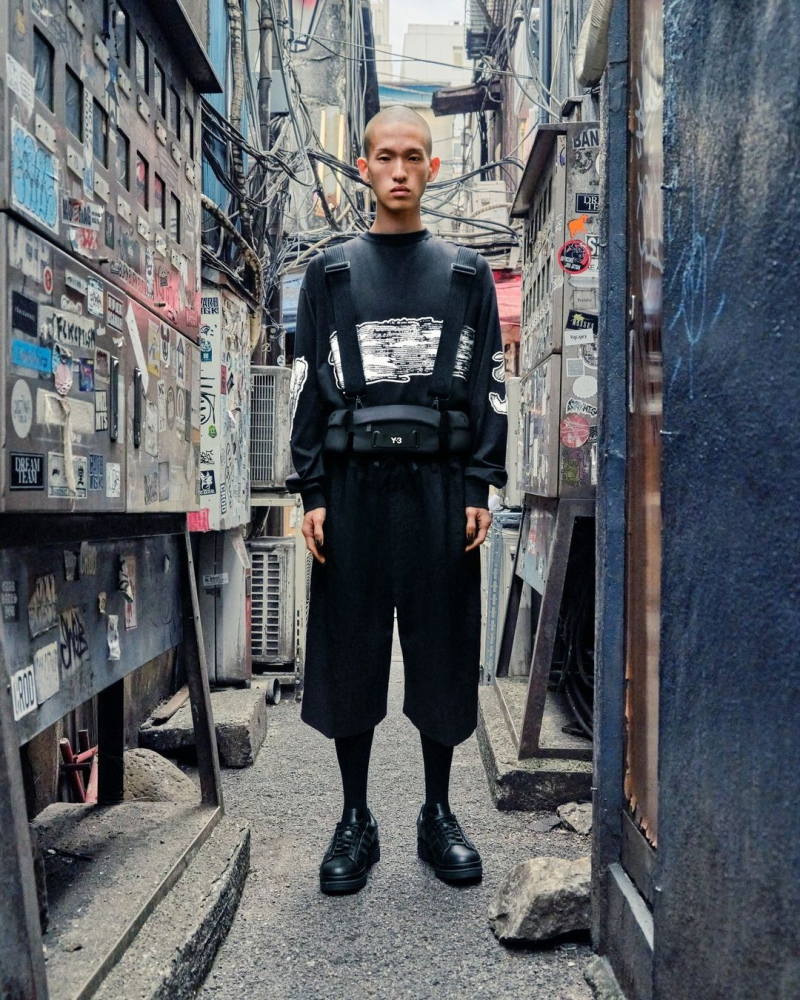
Image via https://www.instagram.com/adidasy3/ 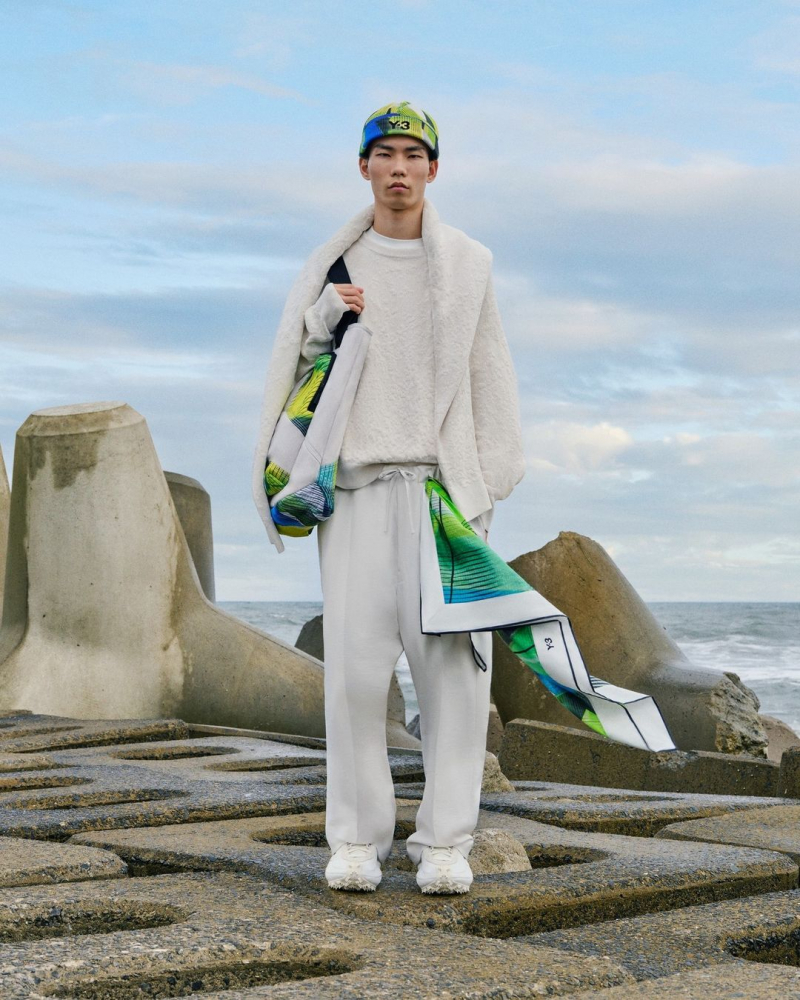
Image via https://www.instagram.com/adidasy3/ -
Jun Takahashi founded the Japanese streetwear clothing brand Undercover (also known as Undercoverism). The label has been dubbed "the essence of Japanese cool," and it features finely crafted clothing that is "strange but beautiful," in Takahashi's words. Undercover has received numerous awards and praise from other fashion designers, such as Miuccia Prada and Rei Kawakubo.
With its unique stylistic references to punk and street fashion, Jun Takahashi's Undercover label has been rocking the fashion world. Undercover debuted in 1989, while Takahashi was still a student at the Bunka Academy of Fashion, and has since been featured at major fashion shows in both Tokyo and Paris. Takahashi and Nigo, founders of the A Bathing Ape brand, opened a store called Nowhere in the trendy Tokyo district of Harajuku in 1993. After the success of Nowhere, Takahashi and Nigo decided to open another shop in Aoyama. Takahashi's designs were soon seen on the catwalk in Tokyo. Following this, a new shop called "Nowhere LTD" opened, featuring only clothing from the Nowhere brand.
Takahashi's punk and street-style looks propelled him into the fashion world, and his Undercover brand continues to be successful today. In 2005, he was asked to design a limited-edition camera case for Canon as well as guest edit the Belgian A Magazine. His collection is also available at Rei Kawakubo's Dover Street store in London. These successes, and possibly more to come, demonstrate Takahashi's power as a designer, and his Undercover brand's ardent fans would wholeheartedly agree.
Founded: 1993
Headquarter: Tokyo, Japan
Instagram: @undercover_lab (1M followers)
Website: https://undercoverism.com/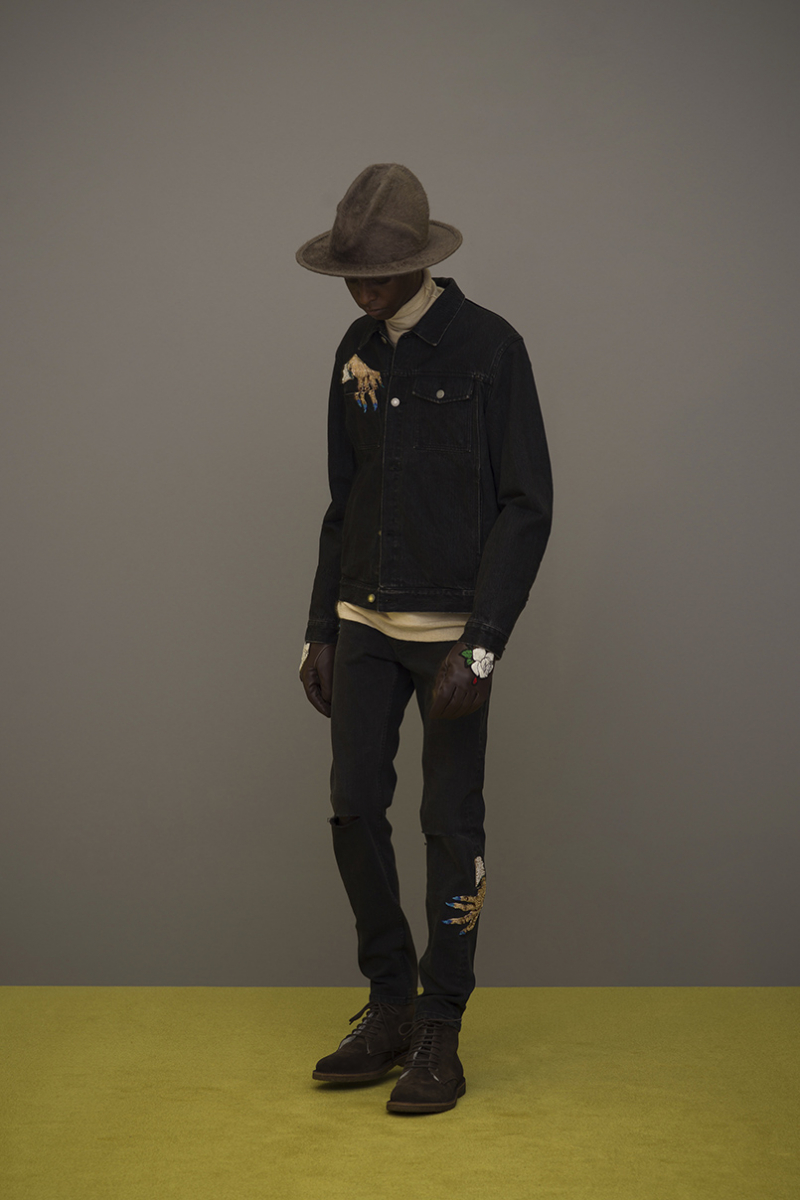
Source photo: https://undercoverism.com/collections/?ctype=mens 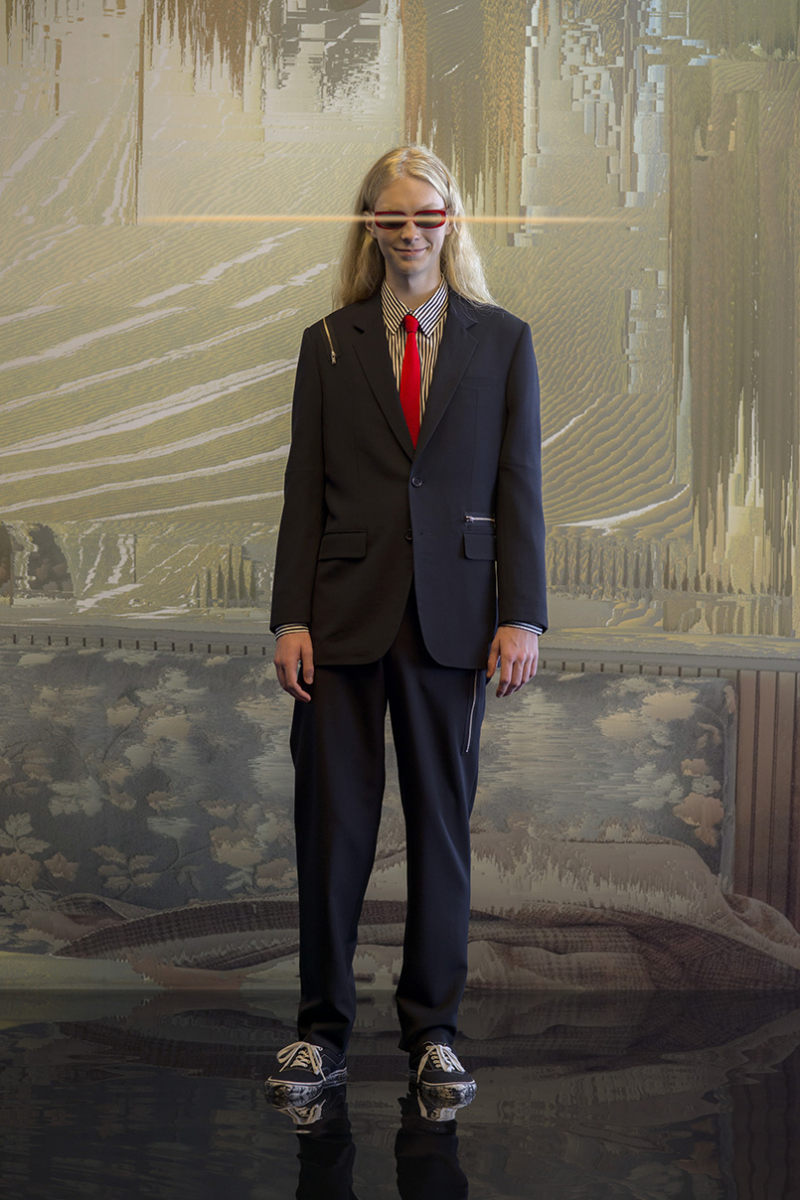
Source photo: https://undercoverism.com/collections/?ctype=mens -
Beams began in 1976 as a small shop in Tokyo's Harajuku district and has since grown to become a major retail force in Japan. Beams Plus, the company's rugged, heritage- and workwear-inspired men's line, was introduced in 1999. Beams has been a launching pad for some of the world's coolest menswear since it first opened its doors in Harajuku nearly 50 years ago.
Today, the Japanese retailer has 150 stores, each housing an expansive array of goods from a global roster of elite makers, as well as exclusive collaborations that style-conscious fellas outside of Japan have been eying for decades. However, Beams is also the source of one of menswear's best-kept secrets: an in-house line of extremely cool clothing with a focus on gently-freaked Americana made with the retailer's trademark attention to detail.
Since the late '90s, Beams Plus—the juggernaut's most accessible menswear line—has functioned as a sort of Japanese J.Crew, producing neo-prep staples at prices that belie the quality involved. But the sub-label isn't interested in producing exact replicas of its inspiration; Beams Plus chinos are a little wider and more dramatically pleated than their counterparts, and its shirts are a little boxier and more interestingly patterned. The entire collection is a half-step more daring than what you'd typically find on the shelves of your local mall—though that's increasingly where you'll find it.
Founded: 1976
Headquarters: Tokyo, Japan
Instagram: @beams_official (833.000 followers)
Website: https://www.beams.co.jp/global/
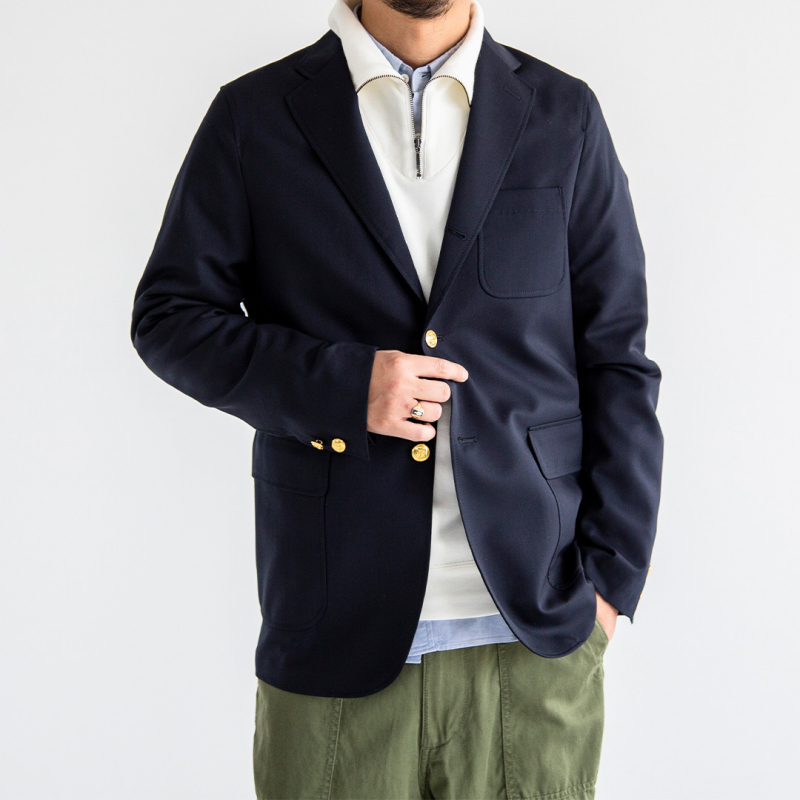
Image via https://www.instagram.com/beams_official/ 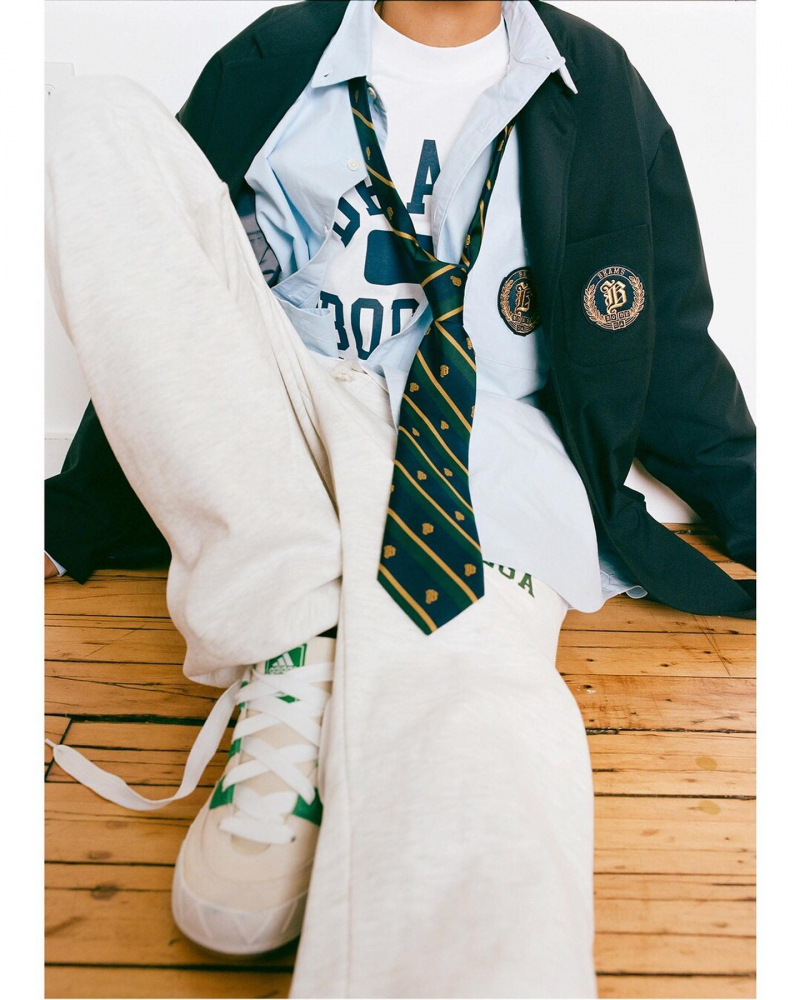
Image via https://www.instagram.com/beams_official/ -
UNIQLO is a clothing and apparel company that began in 1949 as a textile manufacturer in Yamaguchi, Japan. It is now a global brand with over 1,000 stores worldwide. redefining clothing with an unwavering focus on quality and textiles since the company's inception in 1949. Uniqlo's unwavering commitment to innovation and company culture are two of its key brand success factors.
Tadashi Yanai, the company's Japanese founder, is famous for saying, "Without a soul, a company is nothing." This soul is reflected in the 23 management principles developed by Tadashi Yanai and instilled in every Uniqlo employee. These principles are based on putting customers first, giving back to society, and being self-disruptive.
There is no one quite like Uniqlo for the essentials you wear every day. The genius of the high-street behemoth is that the more things change, the more they appear to stay the same—you can walk into any Uniqlo store and find the same neatly cut classics you bought ten years ago, right alongside a brand new collaboration or on-trend colorway. The brand's shirts are a particularly appealing part of its offering, and there is little competition for reasonably priced linen in a variety of summer colors. Meanwhile, its chinos, which can be altered in-store the same day, are the foundation of many a smart casual ensemble.
Founded: June 2, 1984
Headquarters: 717-1, Sayama, Yamaguchi City, Yamaguchi 754-0894, JapanInstagram: @uniqlo_jp (810.000 followers)
Website: https://www.uniqlo.com/us/en/
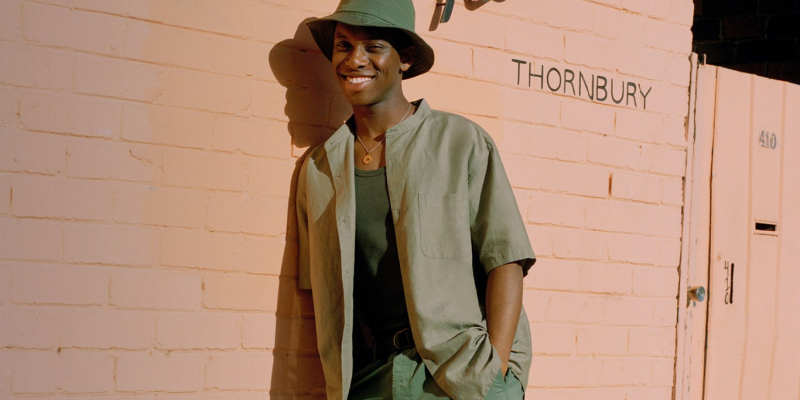
Source photo: https://www.uniqlo.com/us/en/men 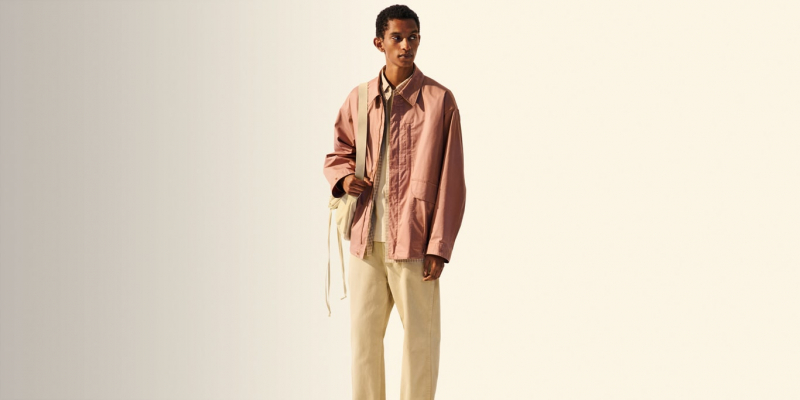
Source photo: https://www.uniqlo.com/us/en/men -
Seiko Group Corporation (Seik Gurpu kabushiki gaisha), also known simply as Seiko (/seko/ SAY-koh, Japanese: [seko]), is a Japanese manufacturer of watches, clocks, electronic devices, semiconductors, jewelry, and optical products. Kintar Hattori founded Seiko in Tokyo in 1881 and introduced the world's first commercial quartz wristwatch in 1969.
Seiko is most well-known for its wristwatches. Seiko, along with Rolex, is one of only two watch companies that are vertically integrated. Seiko can design and develop all of the components of a watch in-house, as well as assemble, adjust, inspect, and ship them. Seiko's mechanical watches are made up of about 200 parts, and the company has the technology and manufacturing facilities to design and manufacture all of these parts in-house.
Seiko's name is derived from Seikosha, which roughly translates to "the House of Exquisite Workmanship." It stands to reason, then, that the Japanese watch brand has been distinguished by a truly Japanese work ethic and attention to detail since 1892. The brand rose to prominence in the 1960s, when it was adopted by a generation less interested in heritage and more interested in items that worked reliably in their hectic daily lives. That utilitarian air lingers to this day, and Seiko watches are a modern, functional counterpoint to their more traditional Swiss counterparts. (Not that the brand is immune to luxury excellence; its upscale Grand Seiko models can cost up to £50,000 per piece.)
Founded: 1881
Headquarters: Ginza, Ch, Tokyo, Japan
Instagram: @seikowatchofficial (702.000 followers)
Website: https://www.seikowatches.com/jp-ja
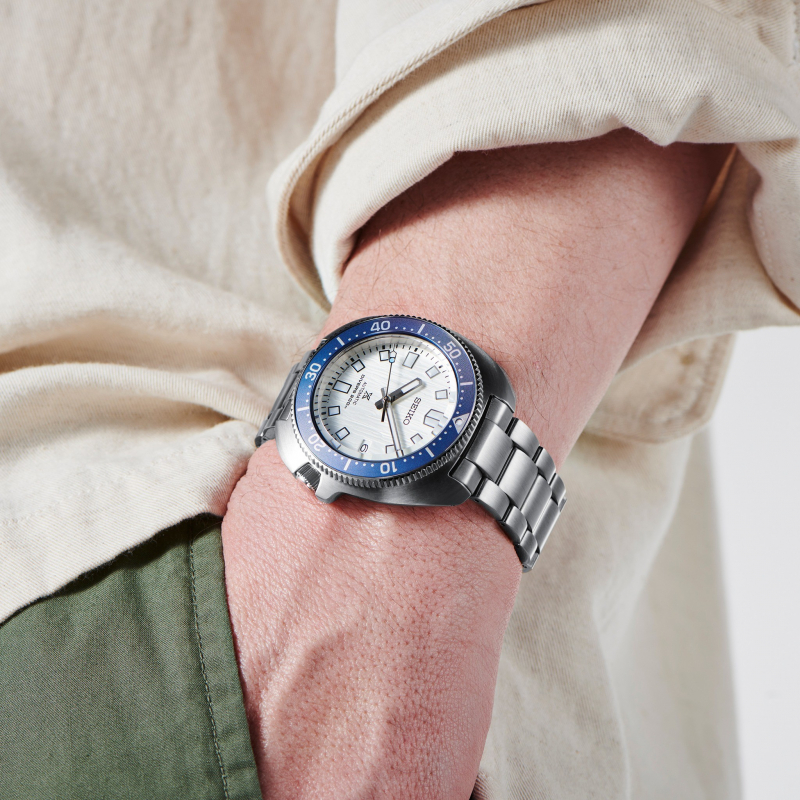
Image via https://www.instagram.com/seikowatchofficial/ 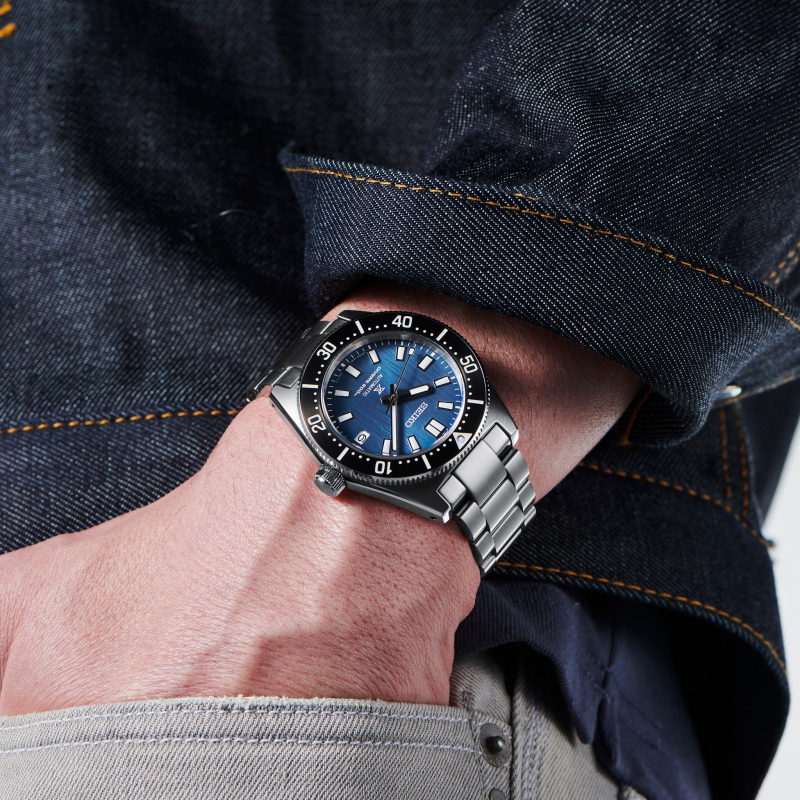
Image via https://www.instagram.com/seikowatchofficial/ -
Shinsuke Takizawa founded the Japanese streetwear label Neighborhood in 1994. It has grown from a small footprint in Harajuku's backstreets to become one of the most influential brands in modern, contemporary streetwear. The company creates high-quality motorcycle apparel with military, workwear, counter-culture, Native American, and outdoor themes. Rather than being dictated by the industry, seasons are inspired by cultural movements. Since its inception, the influence of neighborhoods has spread far and wide, and collaborations have undoubtedly contributed to their success.
Today, the label, like its sister brand, Undercover, is regarded as one of the most influential in the world of Japanese fashion. They discover the brand through numerous collaborations with major brands, such as Adidas, A Bathing Ape, Cav empt, Vlone, or Mastermind, which help to build the brand's reputation. Every time, the essence of these brands' universes is clearly visible in order to create a shared vision that offers a black tee shirt with a powerful print or a bandana shirt.
The perspectives of residents in the same popular Japanese district is so different yet so similar. The Japanese brand's philosophy is to reinterpret elements of motorcycle, military, and workwear by incorporating them into a range of unique and qualitative clothing collections, primarily for men, as well as fashion.
Founded: 1994
Headquarters: Japan, 150-0041 Tokyo, Shibuya City, Jinnan, 1 Chome813
Instagram: @neighborhood_official (611.000 followers)
Website: https://www.neighborhood.jp/
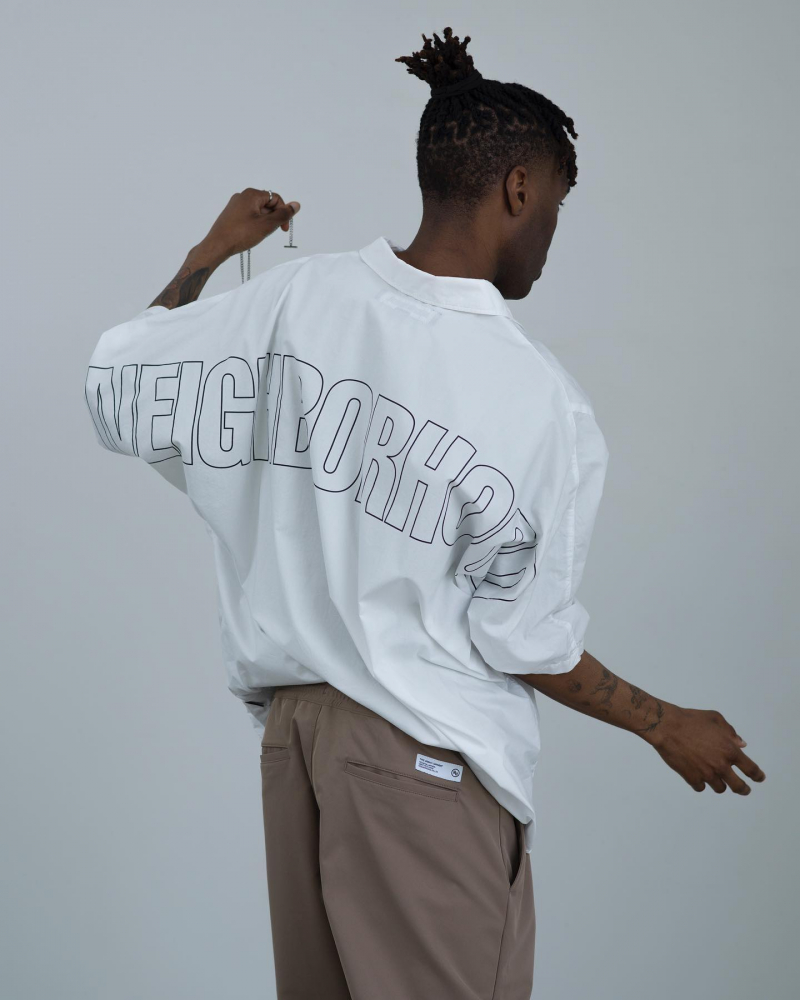
Image via https://www.instagram.com/neighborhood_official/ 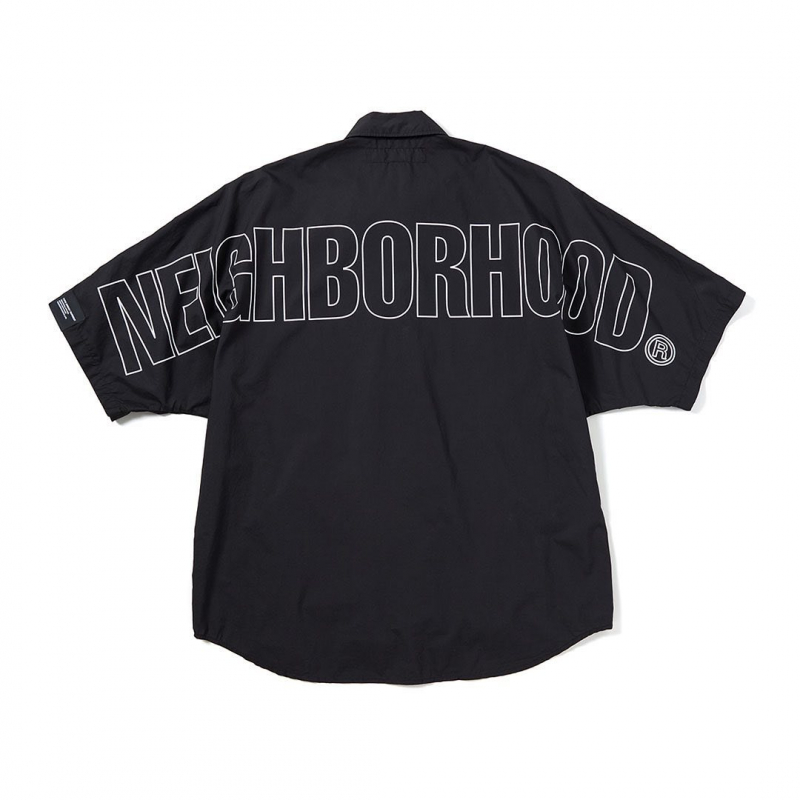
Image via https://www.instagram.com/neighborhood_official/ -
Camoshita is a Japanese menswear label that draws inspiration from 1960s American and French menswear. Their one-of-a-kind designs and relaxed, tailored pieces give modern gentlemen a vintage vibe. Designer Yasuto Kamoshita uses elements such as a soft, relaxed shoulder and a unique color palette to create original designs and an authentic brand that represents "the Japanese way to dress."
Yasuto Kamoshita is one of menswear's most influential and photographed figures. United Arrows, founded by Kamoshita and others in 1989, has revolutionized Japanese menswear retail. He was previously the buyer for the men's department and is now the company's creative director.
Camoshita, Kamoshita's quasi-eponymous brand, began as a more personal project for Kamoshita. He is part of a small group of Japanese men who kept the Ivy style alive after it died out in America. Camoshita's unique color palette is inspired by Yasuto Kamoshita's admiration for 1960s American and French fashion and style icons such as Steve McQueen, Jean-Paul Belmondo, and Serge Gainsbourg. Camoshita combines this American style with the increasingly popular and similarly soft-shouldered Southern Italian style.
Despite these obvious influences, Camoshita is unmistakably Japanese. According to Kamoshita, the brand is "about the Japanese way of dressing." Camoshita's tailored clothing is made in Japan and is rooted in classic menswear tradition while evoking a whimsical taste and a laid-back attitude.
Founded: 2007
Headquarters: Tokyo, Japan
Instagram: @unitedarrows_official (409.000 followers)
Website: https://store.united-arrows.co.jp/brand/ua/
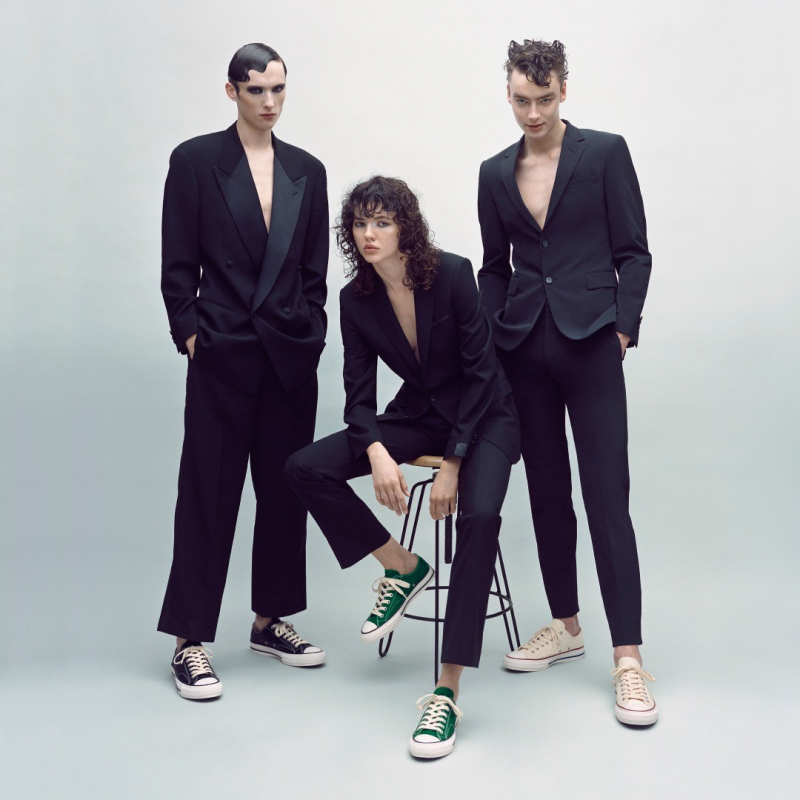
Image via https://www.instagram.com/unitedarrows_official/ 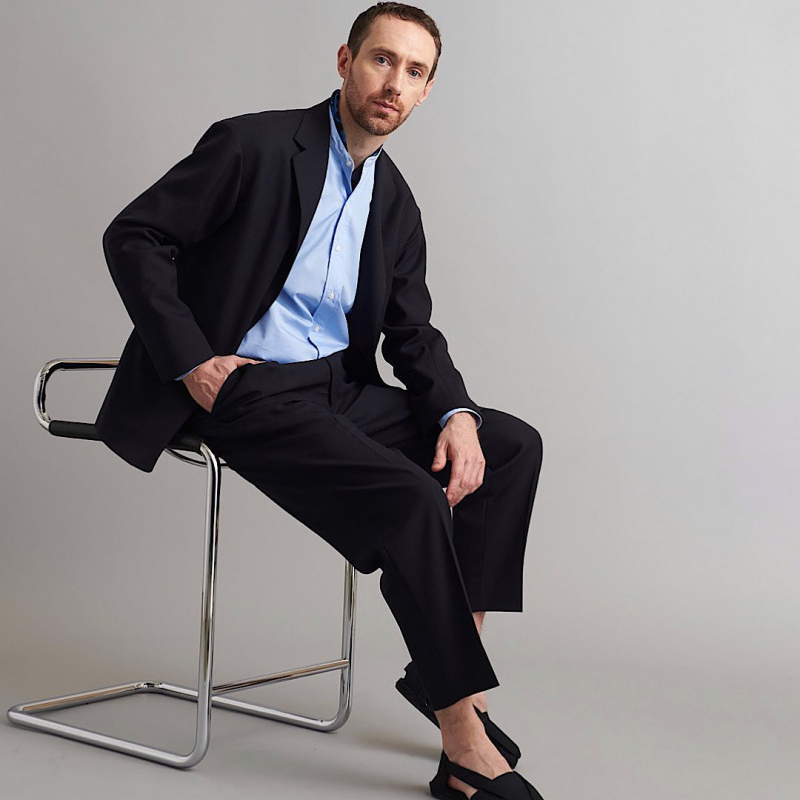
Image via https://www.instagram.com/unitedarrows_official/ -
Hiroki Nakamura founded Visvim, a Japanese menswear brand, in 2000. The company is headquartered in Tokyo, Japan, and operates stores in both Japan and the United States. Visvim is also available in department stores and boutiques around the world, including Bergdorf Goodman in New York and Dover Street Market in London.
In addition to the main Visvim line, Nakamura designs a womenswear line called WMV and a conceptual menswear line called F.I.L. There is no meaning to the word "Visvim." Hiroki Nakamura stated that he liked v-lettered logos and searched the "v" section of a Latin dictionary until he came across "vis" and "vim" and liked how the two words looked together.
Visvim's flagship stores are called F.I.L., which stands for Free International Laboratory. This stems from Nakamura's desire for the stores to serve as a testing ground for an international brand. Visvim footwear and clothing are made using a combination of traditional and modern manufacturing techniques.Vintage Americana, Japanese Edo period garments, French workwear, Amish patchwork fabric, Native American clothing, the Alaskan outdoors, and Finnish Sami tribe culture have all served as inspiration for Visvim products in the past. Visvim uses Gore-Tex material for waterproof jackets and replaceable Vibram outsoles, in addition to vintage construction and dyeing techniques.
Founded: 2000
Headquarters: Tokyo, JapanInstagram: @visvimwmv (399.000 followers)
Website: https://www.visvim.tv/
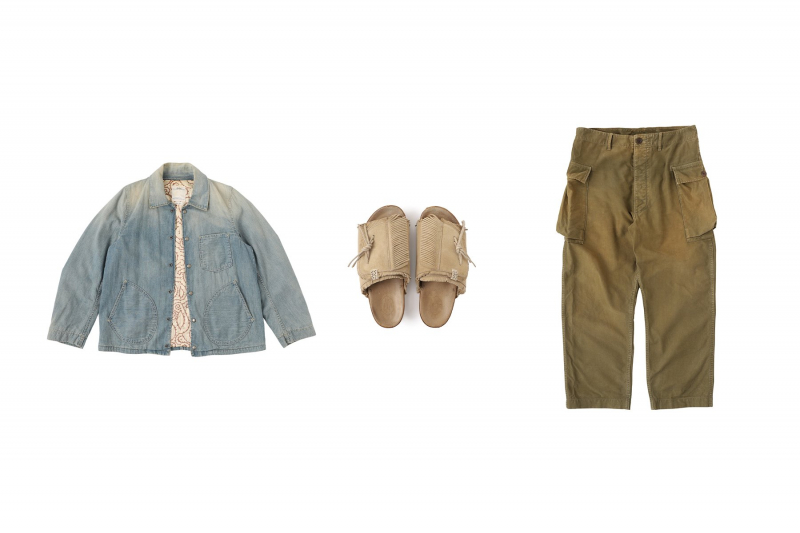
Source photo: https://www.visvim.tv/ 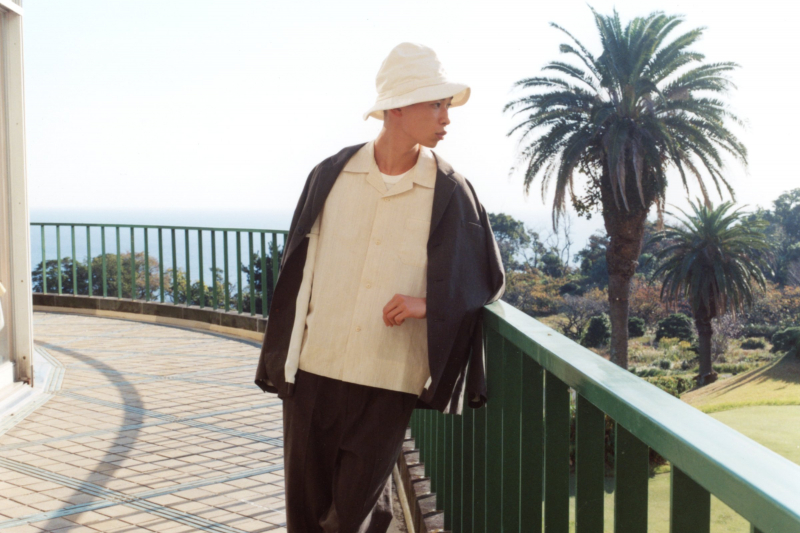
Source photo: https://www.visvim.tv/ -
Junya Watanabe was raised in the Comme des Garçons creative hothouse under the watchful eye of Rei Kawakubo. His first collection, released in 2001, has been praised for its avant-garde approach and astute positioning in the decades since. Watanabe collections are distinguished by functional garments such as windbreakers made of innovative and technical materials.
Junya Watanabe's name is pronounced "joon'ya wa'ta'na'bey." Junya is a Japanese word that roughly translates to "pure" or "purity." Watanabe is the fifth most common surname, meaning "ferryside." Junya Watanabe is a platform for the designer to realize his forward-thinking ideas. Unusual cuts and asymmetrical silhouettes are complemented by sultry leather, patchwork designs, punchy denim embellishments, and other out-of-the-box details and materials. Each season, one can expect edgy aesthetics to mix with haute couture craftsmanship.
Junya Watanabe Man is primarily concerned with creating simple yet intricately detailed apparel that’s smart, functional, and timeless. The designer’s 20-year-old label seeks inspiration from different facets of menswear—from traditional military uniforms to late 20th-century workwear—to create pieces to be worn ad infinitum; in short, they’re the kind of garb you’ll be passing down to your children and your children’s children.
Founded: 2001
Headquarters: Aoyama, Tokyo
Instagram: @junyawatanabe (223.000 followers)
Website: none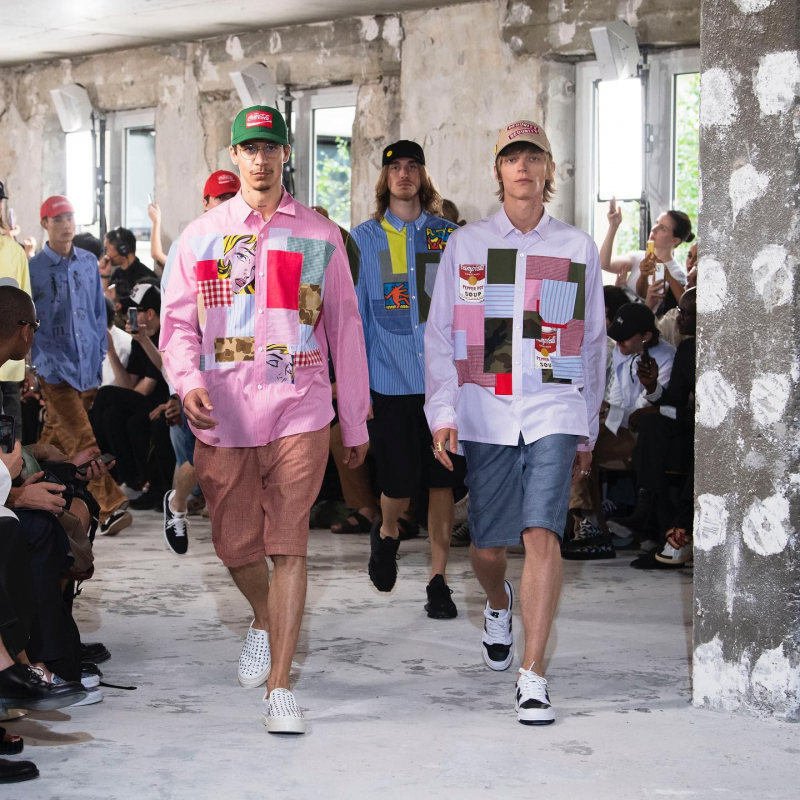
Image via https://www.instagram.com/junyawatanabe/ 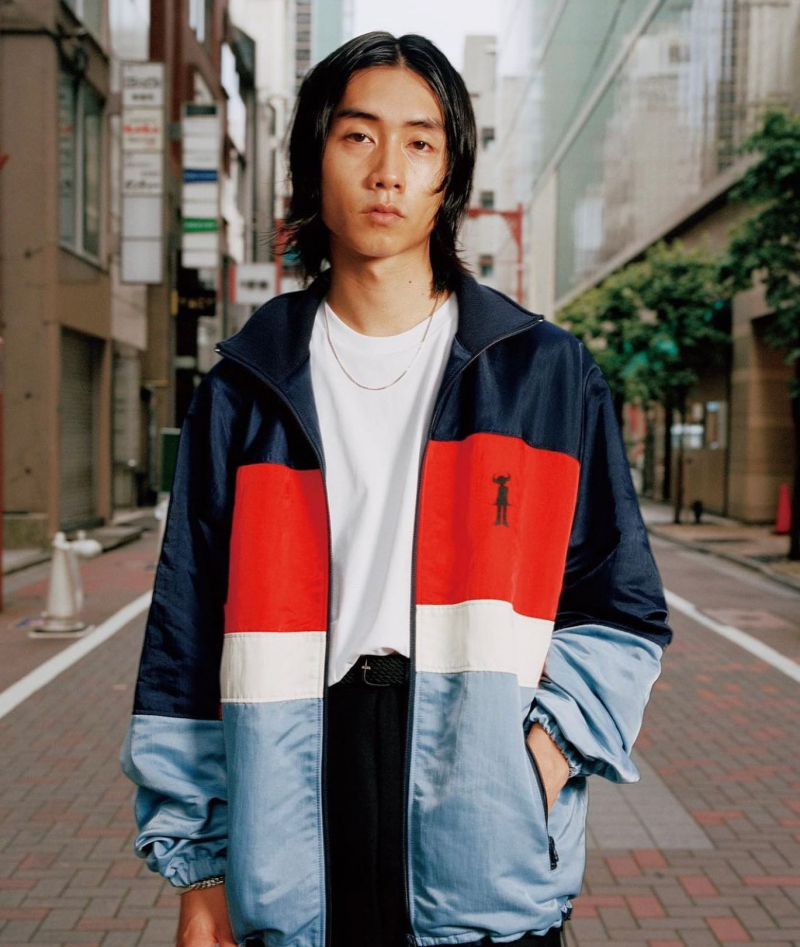
Image via https://www.instagram.com/junyawatanabe/ -
Onitsuka Tiger is a Japanese sports fashion brand founded in 1949 by Kihachiro Onitsuka's Onitsuka Shkai (now Onitsuka Co., Ltd.), a sports shoe company. Since its inception in 1949, Onitsuka Tiger has produced footwear for football, running, martial arts, basketball, cheerleading, volleyball, cross-training, track and field, wrestling, golf, cricket, fencing, and tennis. The striped Mexico 66 Line is the most well-known Onitsuka Tiger shoe brand.
Asics continues to sell vintage-style Onitsuka Tiger shoes, such as the Mexico 66. Asics' portfolio includes Asics, which focuses on sports performance; Asics Tiger, which focuses on retro and lifestyle sportswear; and Onitsuka Tiger, which has premium positioning and designer collaborations.
Onitsuka Tiger is widely regarded as the inventor of the first running shoes, having founded his company to serve the needs of the Tokyo athletic community. Phil Knight, the founder of Nike, was the first to import these ingenious lightweight icons into the United States in the 1970s, and it's safe to say that every single sports shoe since has had a little bit of the Onitsuka DNA in its sole. Onitsuka Tiger sneakers, still distinguishable by the swooping arcs on their flanks, are an exercise in retro understatement and now come in a truly dizzying array of colorways, collaborations, and textured iterations.
Founded: 1949
Headquarters: Kobe, Hygo, Japan
Instagram: @onitsukatigerjp (190.000 followers)
Website: https://www.onitsukatiger.com/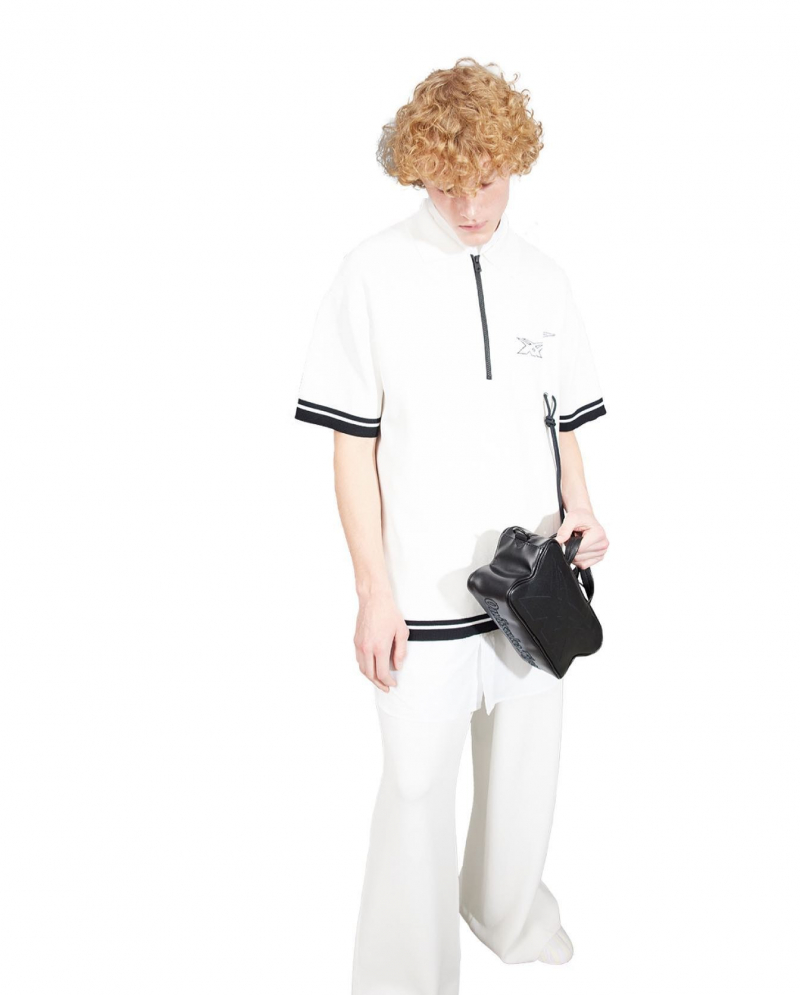
Image via https://www.instagram.com/onitsukatigerjp/ 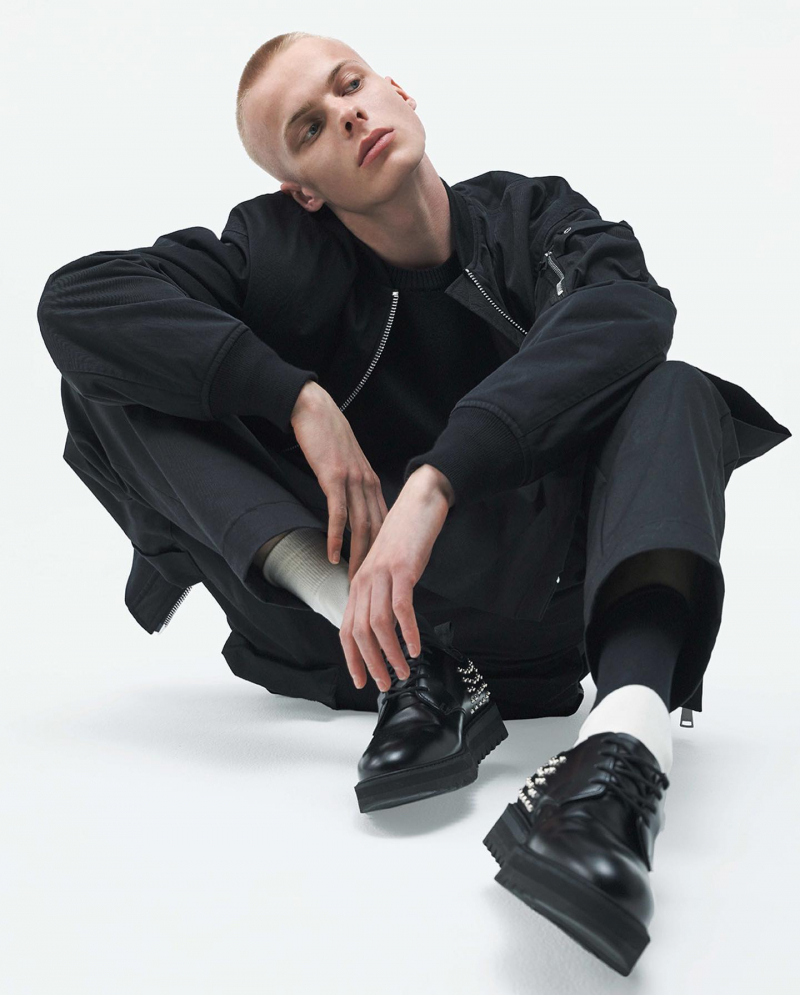
Image via https://www.instagram.com/onitsukatigerjp/ -
White Mountaineering, a Japanese clothing brand, was founded in 2006 with the goal of combining three key principles into a single clothing line: design, utility, and technology. Yosuke Aizawa founded the outdoor-luxe crossover White Mountaineering in 2006, inspired by his native Japan's diverse climate and terrain. The brand's mission statement is both simple and complex: to combine functional, athletic silhouettes with rich fabrics and elegant detailing (or, in other words, to create works of art that you could hike in). Expect elegant luggage and sumptuous outerwear, as well as graphic T-shirts and vibrant prints.
The goal is to create a brand with high-tech content and design that is capable of meeting the highest quality and functionality standards while also incorporating itself into the beauty of the design. As the name suggests, technical clothing is inspired by high mountains, a place as 'legendary and inspirational' as 'the field' for testing the quality of technology and product functionality. The brand quickly gains a high reputation, is included in some of the most prestigious boutiques in the world, and later gives birth to a series of collaborations with globally renowned brands such as Adidas.
Founded: 2006
Headquarters: Close 20 0-0, Sarugakuchou, Tokyo, 150-0033, Japan
Instagram: @whitemountaineering_official (114.000 followers)
Website: https://whitemountaineering.com/
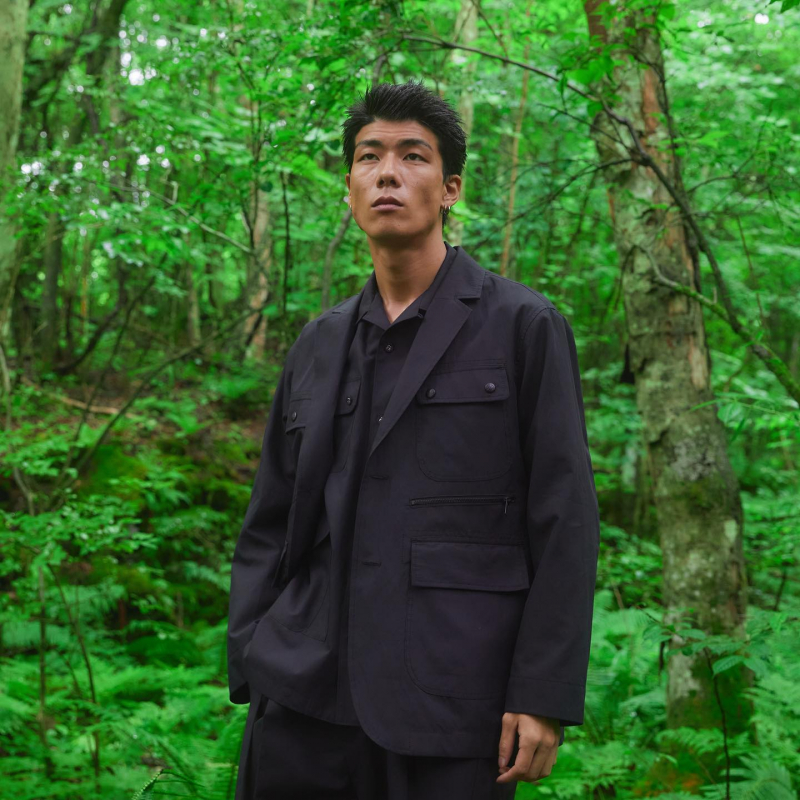
Image via https://www.instagram.com/whitemountaineering_official/ 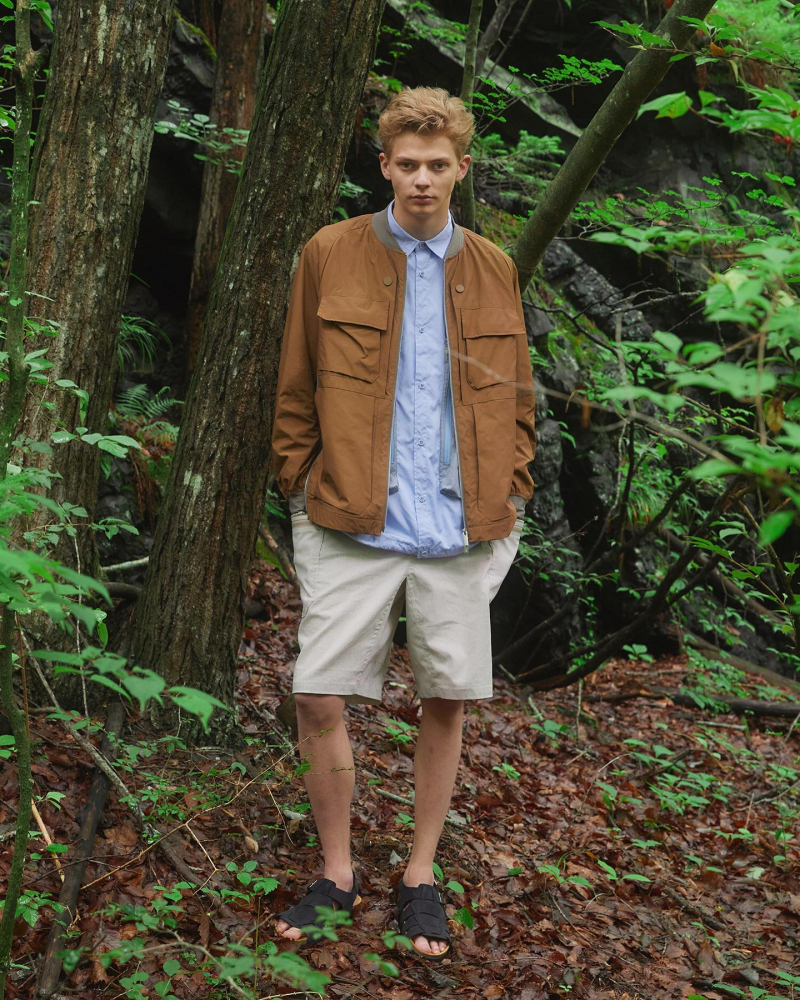
Image via https://www.instagram.com/whitemountaineering_official/ -
Orslow was founded in 2005 in Kobe, Japan, by Ichiro Nakutsu. The name Orslow refers to the label's ethos of crafting clothes with care in response to the fast-paced fashion industry and modern society. Orslow prefers to take his time and pays close attention to fit, detail, fabric selection, and the manufacturing process. As a result, you get a refreshingly simple collection inspired by vintage military and workwear items that you can wear today and tomorrow.
Ichiro Nakutsu's obsession with denim began when his mother gave him a pair of overalls as a child. Since then, the designer and entrepreneur has become one of the world's most devoted selvedge collectors. His first collection pays homage to the many disparate references in his own wardrobe, while the name derives from the careful thought his team puts into each garment. Each of OrSlow's tough pieces is weaved on a traditional shuttle loom before being washed and aged for a uniquely vintage look, influenced by sixties Americana, Japanese military uniforms, and European workwear.
Founded: 2005
Headquarters: Nishinomiya, Japan
Instagram: @orslow (95.800 followers)
Website: http://orslow.jp/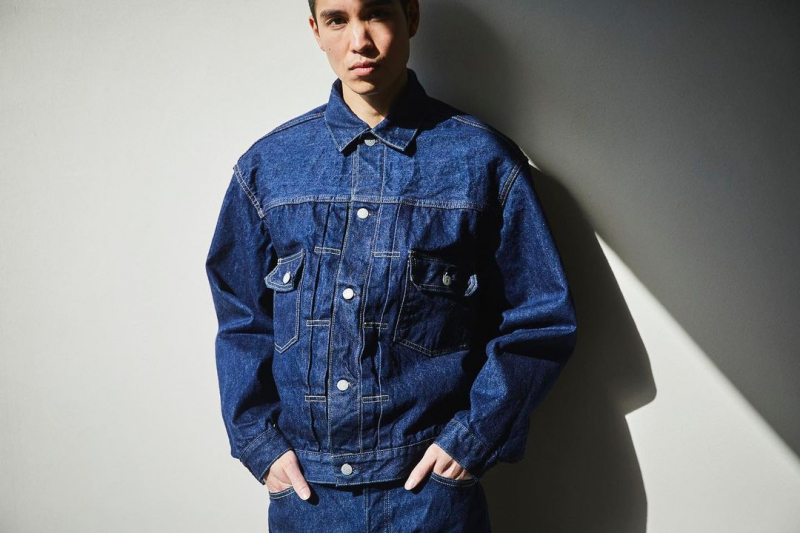
Image via https://www.instagram.com/orslow/ 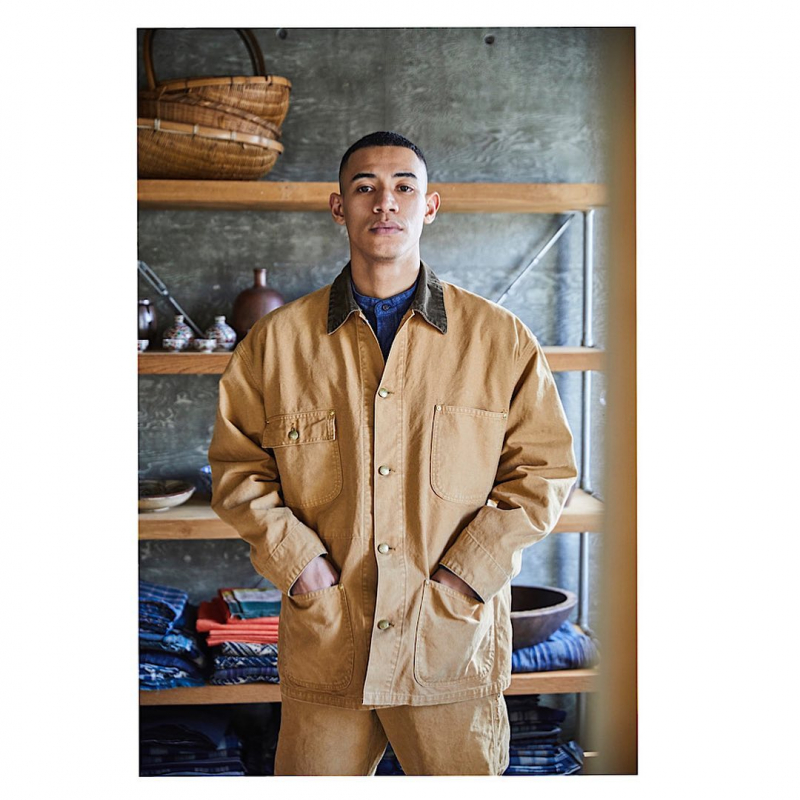
Image via https://www.instagram.com/orslow/ -
Tabio has been focusing its efforts on creating a world-renowned socks brand since 1968. Their dedication to quality and determination to combine style and comfort led to enormous success in Japan. Tabio's launch in Paris and London is another step toward the creation of the world's first global sock brand. Tabio must always come up with new models to satisfy its discerning customers because trends in Tokyo change at an alarming rate. Tabio has a wide selection of socks (men's and women's), tights, leggings, and the unavoidable "toe-covers" ideal for summer, not to mention the traditional Japanese "Tabi" toe socks...
Tabio's sock masters place a premium on comfort. But, as this wildly popular brand demonstrates, comfort does not have to come at the expense of quality or design. Naomasi Ochi began making stylish shoe liners at the age of 15, and his wares reflect a lifelong commitment to quality (which has paid off—Tabio is now Japan's most popular sock brand). Expect expertly crafted socks in exquisite natural tones with innovative technology—all at a reasonable price.
Founded: 1969
Headquarters: Osaka, Japan
Instagram: @tabio.jp (44.800 followers)
Website: https://tabio.com/jp/
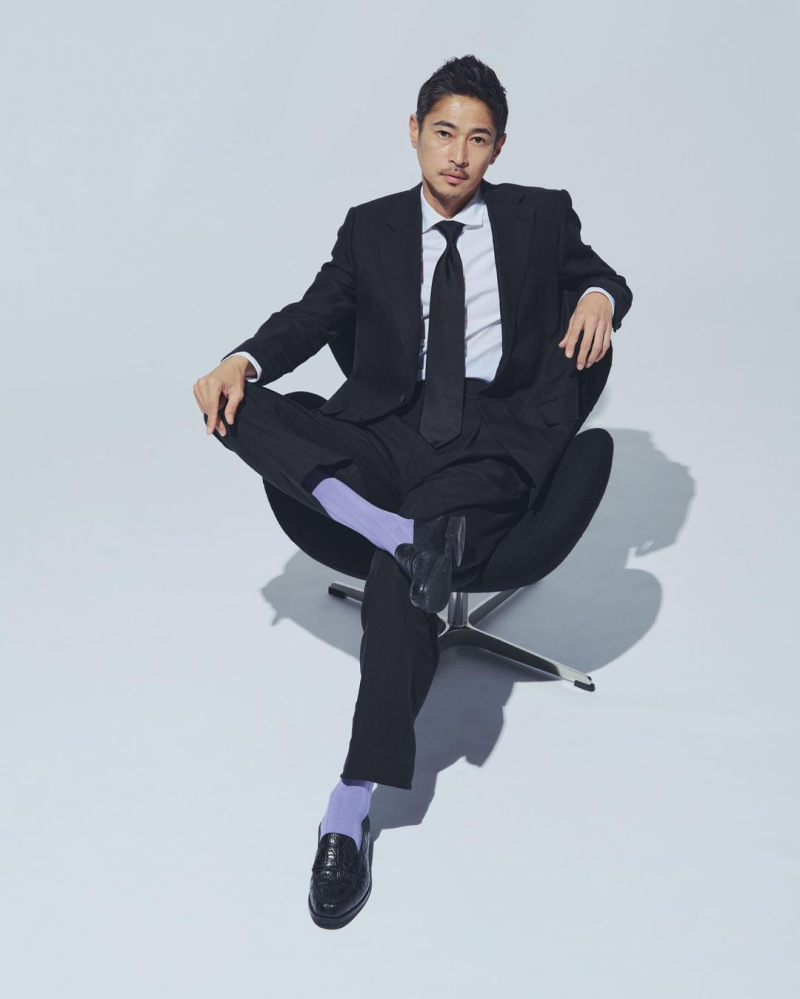
Image via https://www.instagram.com/tabio_men/ 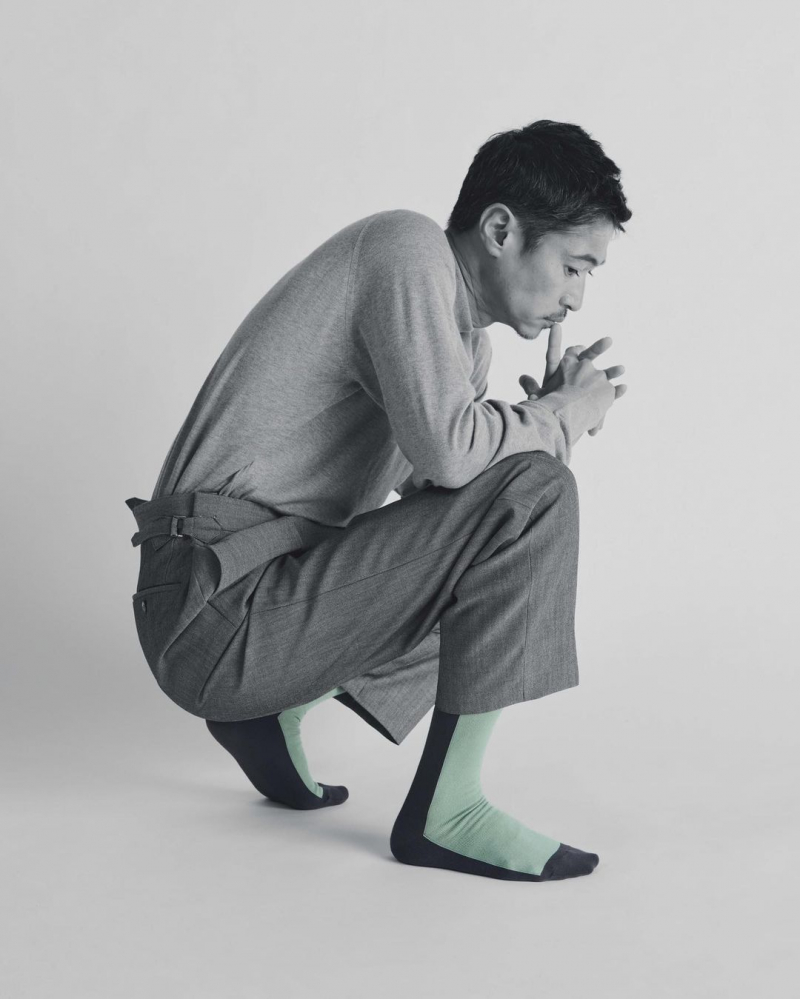
Image via https://www.instagram.com/tabio_men/

















